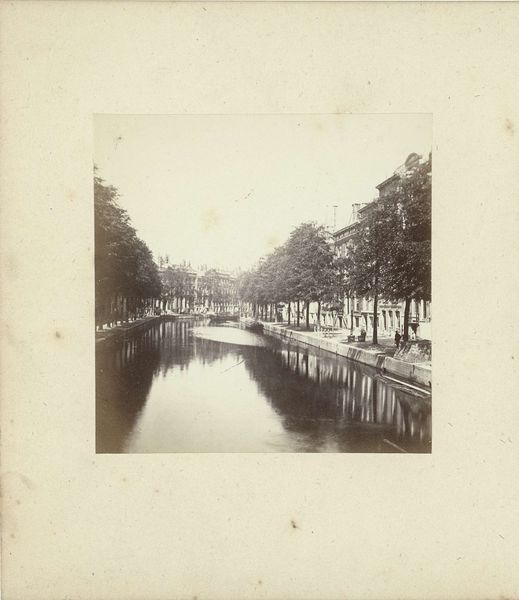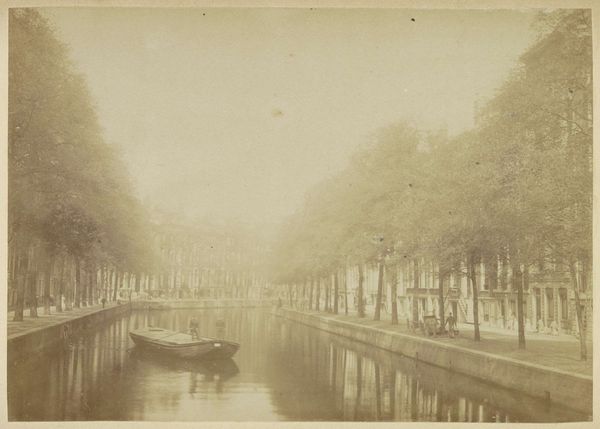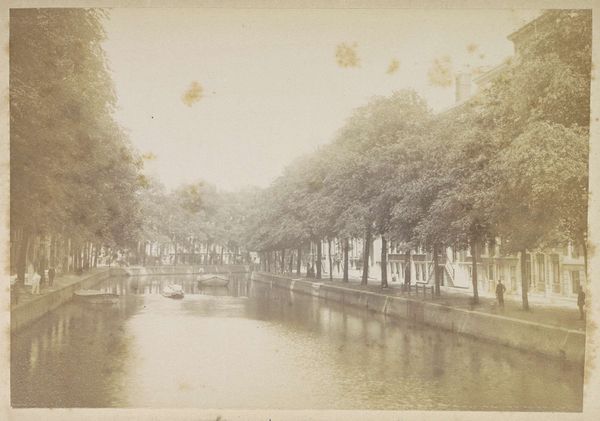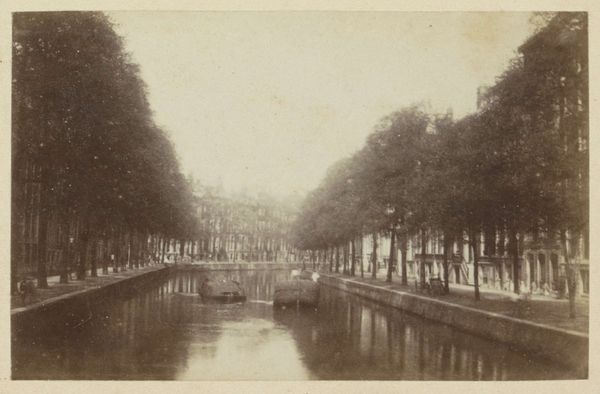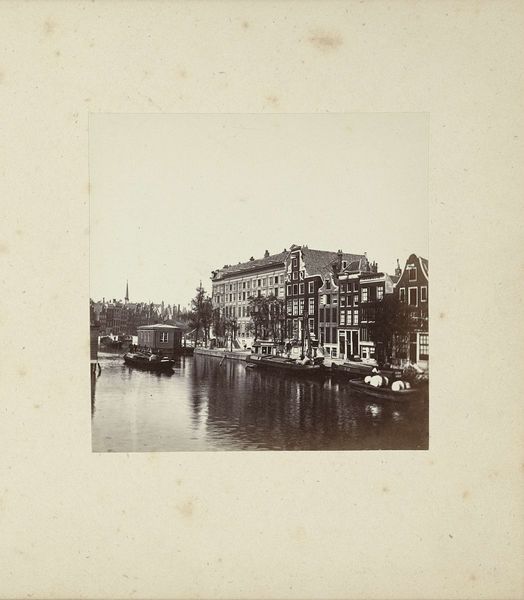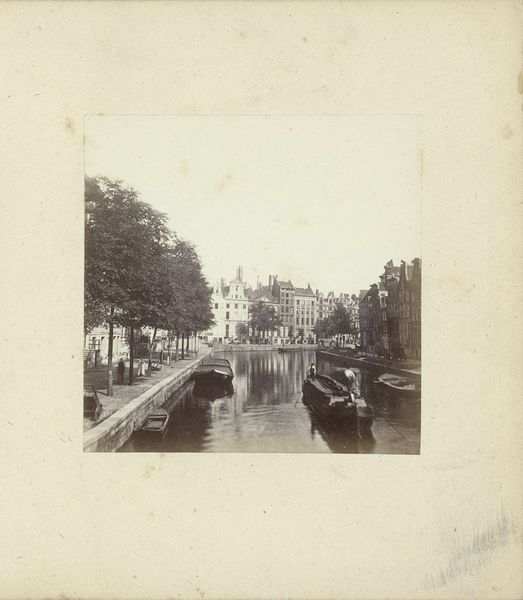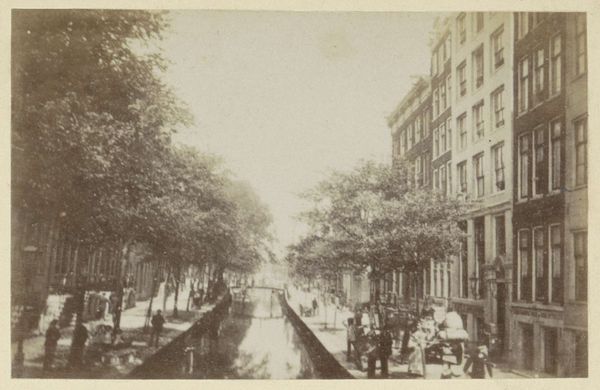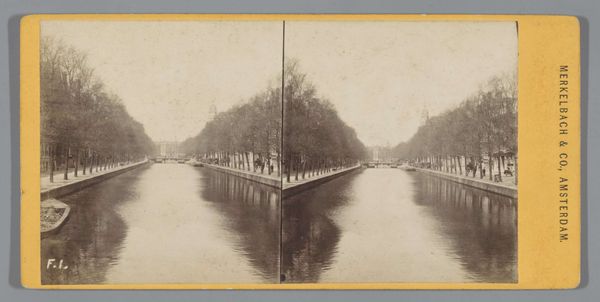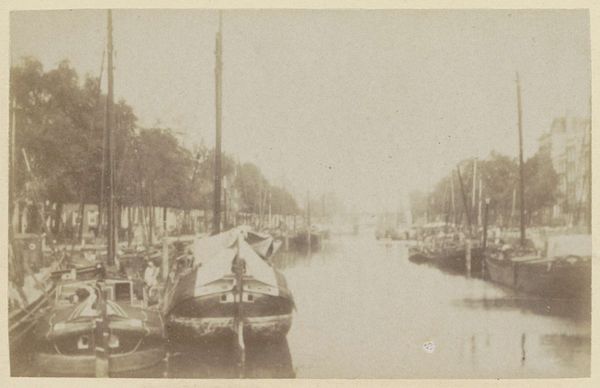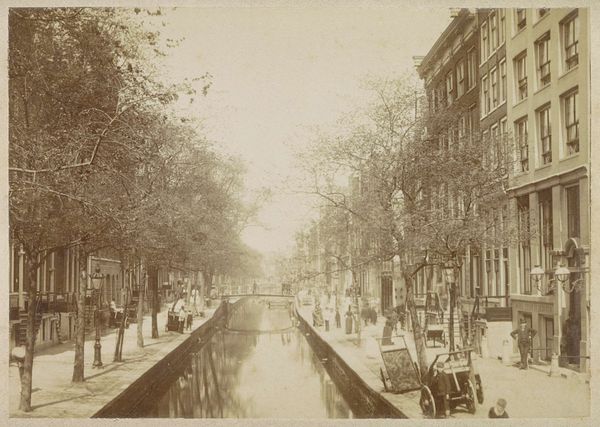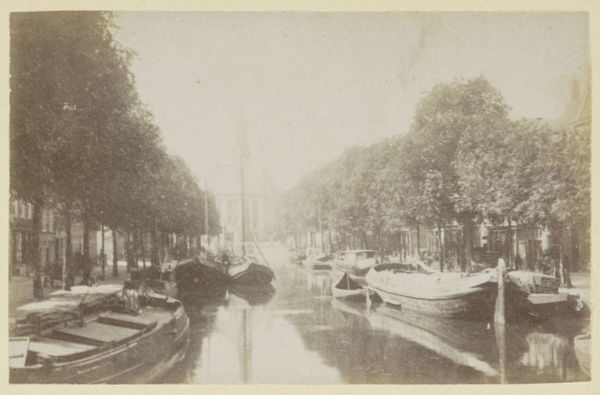
photography, gelatin-silver-print
#
dutch-golden-age
#
landscape
#
photography
#
gelatin-silver-print
#
19th century
#
cityscape
#
watercolour illustration
#
watercolor
Dimensions: height 115 mm, width 196 mm
Copyright: Rijks Museum: Open Domain
Curator: What strikes you first about this view, a gelatin silver print titled "Gezicht op de Zwanenburgwal in Amsterdam," created around 1853 by Eduard Isaac Asser? Editor: The stillness, definitely. It's almost unnerving. The water is like glass, reflecting the buildings with uncanny precision. And the sepia tones lend it a melancholic air, as though looking into a memory fading at the edges. Curator: It’s fascinating that you say “melancholic.” Water, as an element, often appears in visual imagery to represent memory and reflection but also to act as a threshold into other worlds, psychologically or spiritually speaking. Editor: That's it exactly! But it makes me think, who had the privilege of experiencing this tranquility? Who benefits from these carefully composed scenes of Dutch life? The photograph has a calm about it but the daily reality would be quite different. Curator: Interesting! Yes, water often represents collective memory, linking personal narratives to wider historical flows. The tower looming in the background represents communal values—spiritual aspirations given physical form. Editor: So, symbols of community are there. The church steeple might symbolize community, but who actually makes up that community? I’m interested in those who were historically excluded. This image gives a very one-sided and limited perspective of what daily life may have been like. Curator: Right. Although we cannot know with certainty the intention, the stillness could also speak to something about photographic technology at that time, too, the longer exposure. Editor: And I suppose it gives it the appearance of permanence, this captured moment. Still, I look at that water and imagine the social currents it reflects—inequalities that history often washes over. Curator: Asser was among the first Dutch photographers to explore cityscapes with photography. It resonates differently knowing this work was so cutting edge at the time. I still find the light striking, despite what else we may know about that era. Editor: True. This one frozen moment reminds us of what survives of Amsterdam while provoking conversations of what's hidden and lost to time. I think I’ll carry that melancholic air with me, contemplating not only the view but its broader implications.
Comments
No comments
Be the first to comment and join the conversation on the ultimate creative platform.

